.
The Stoa of Attalos (also spelt Attalus) is one of the most impressive buildings in the Athenian Agora. It was built by and named after King Attalos II of Pergamon whom ruled between 159 BC and 138 BC.
Typical of the Hellenistic Age, the stoa was elaborate and enormous compared to the earlier building in Athens. The stoa is 115 by 20 meters and comprised of Pentelic marble and limestone. Surprisingly, the Doric order was used for the ground floor with an Ionic lower inner colonnade. Each story had two aisles and twenty-one rooms lining the western wall. The rooms of both stories were lighted and vented through doorways and small windows located on the back wall. There were stairways leading up to the second story at each end of the stoa. The interior order of the upper floor was the new Pergamene order, which was common in that period.
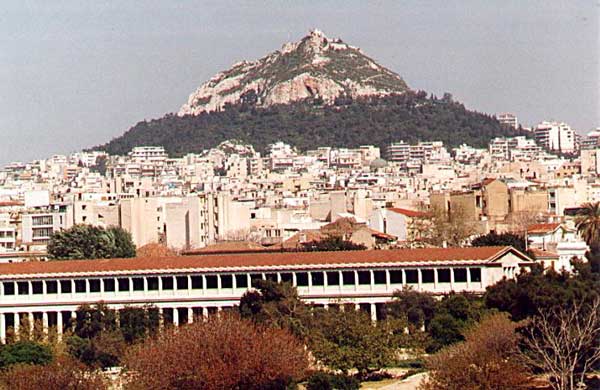
Tha Stoa of Attalos building and Lykavittos hill in the background (Source)
<History
The stoa is identified as a gift (to the city of Athens) for the education he had received there. A dedicatory inscription on the architrave shows it as built by Attalos II, ruler of Pergamon from 159 B.C. to 138 B.C.

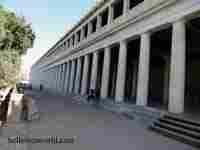

Stoa of Attalos, Stoa of Attalos, Stoa of Attalos
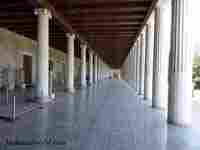
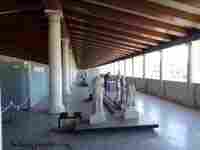
Stoa of Attalos, Stoa of Attalos
The stoa was in frequent use until it was destroyed by the Herulians in 267 AD. The ruins became part of a fortification wall, which made it easily seen in modern times. In the 1940s, the Stoa of Attalos was fully reconstructed and made into a museum, the Ancient Agora Museum in Athens. The building is particularly importanant in the study of ancient monuments because the reconstruction of 1952 - 1956 replicates the original building.
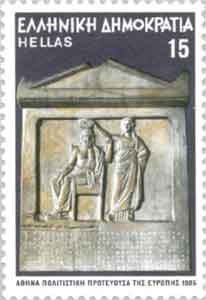
Demos of Athens being crowned by Democracy, Agora Museum Athens (Stoa of Attalos)
| Ancient Greece
Science, Technology , Medicine , Warfare, , Biographies , Life , Cities/Places/Maps , Arts , Literature , Philosophy ,Olympics, Mythology , History , Images Medieval Greece / Byzantine Empire Science, Technology, Arts, , Warfare , Literature, Biographies, Icons, History Modern Greece Cities, Islands, Regions, Fauna/Flora ,Biographies , History , Warfare, Science/Technology, Literature, Music , Arts , Film/Actors , Sport , Fashion --- |
Retrieved from "http://en.wikipedia.org/"
All text is available under the terms of the GNU Free Documentation License

